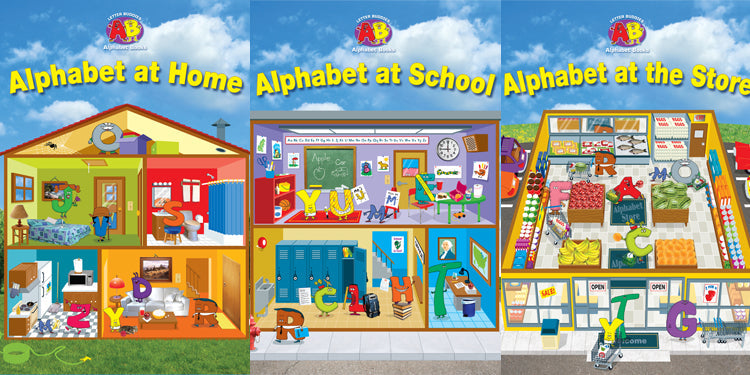 For the last installment of our three part series on teaching children about letters and their corresponding sounds, today we will take a look at teaching the alphabet itself (you can read the earlier posts
here
and
here
). Research suggests that
the best way to teach students the alphabet is in the context of meaningful activities
. Emergent readers often have many hours of exposure to the alphabet before they begin to know the letters. Reading alphabet books is one of the recommended ways for students to get this exposure. This post offers some examples of ways in which alphabet books can be used to maximum effect for teaching students the alphabet. The ideas listed here come from the Letter Buddies Teacher's Guide, but can be adapted to work with other alphabet books.
For the last installment of our three part series on teaching children about letters and their corresponding sounds, today we will take a look at teaching the alphabet itself (you can read the earlier posts
here
and
here
). Research suggests that
the best way to teach students the alphabet is in the context of meaningful activities
. Emergent readers often have many hours of exposure to the alphabet before they begin to know the letters. Reading alphabet books is one of the recommended ways for students to get this exposure. This post offers some examples of ways in which alphabet books can be used to maximum effect for teaching students the alphabet. The ideas listed here come from the Letter Buddies Teacher's Guide, but can be adapted to work with other alphabet books.
Letter Buddies Alphabet Books are great resources that encourage young children to begin learning the alphabet. The large format, lap book size (12” x 16”) encourages conversation and interaction by all children in a whole or small group setting. During alphabet book sharing, children can learn about letter features, letter names, and letter sounds. The large letters in the corner of each page allow for easy letter formation demonstrations.

Each Alphabet Book focuses on an environment that is common to a child’s world—home, school, and store. Encourage children to talk about their experiences in each place, using the vocabulary from these books as much as possible. This will promote greater comprehension and retention of new words and skills.
Working with the Alphabet Books
Your conversation during Alphabet Book sharing is critical. This is the perfect time to encourage oral language development . Explicit talk and questioning about each book will encourage children to make connections to their own experiences and become involved in the reading. This is the time to explain unfamiliar concepts and teach new vocabulary.
Thoughtful questions and comments will also help children focus on different aspects of letter knowledge. You can use the Alphabet Books to:

- Talk about the features of the lowercase and uppercase version of each letter.
- Finger trace the letters to demonstrate formation using verbal directions (table available in Teacher's Guide)
- Name the letters and give students practice naming the letters.
- Talk about how certain letters are grouped together to form a word.
- Explain that there is a word under each picture naming what the object is.
- Show that the letter at the top of the page is the same as the first letter in the word below.
- Demonstrate and practice alphabetical order using the picture glossary.
- Engage in storytelling and conversation while playing the I-Spy game included.
Add to your collection! Have your students create a class alphabet book (or try it individually). Start the year with a large, empty book with at least one blank page per letter. Each time you have a read-aloud, ask the children to identify 2 or 3 items from the story to be placed in the class alphabet book.
For more ideas, be sure to check out the suggested activities provided at the end of each alphabet book! For other similar topics, check out the earlier posts in this series. To see what other early literacy products we offer, you can download our catalog by clicking the image below. More info on the Alphabet Books is available on the key features sheet below.
- Tara Rodriquez






















































